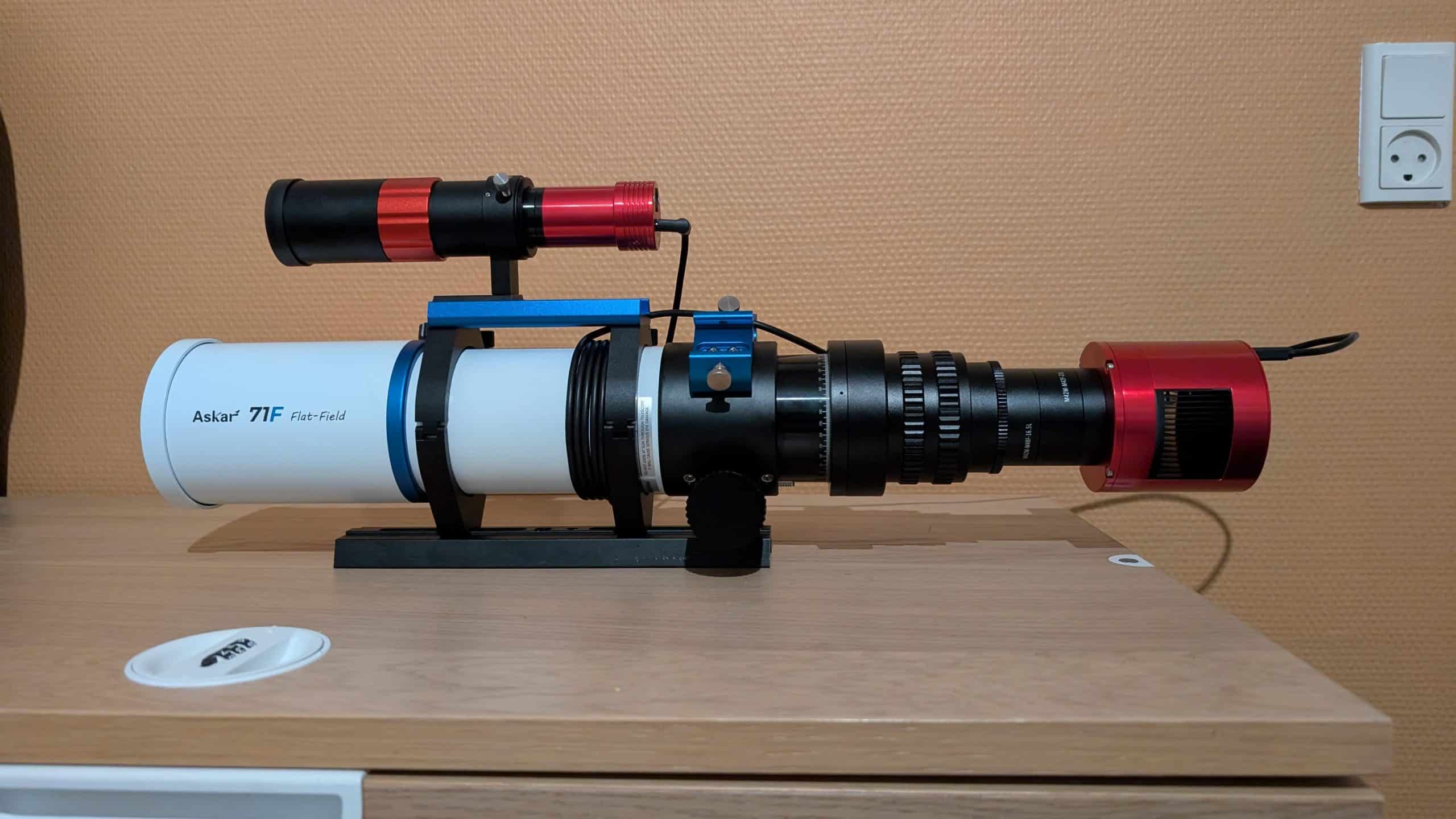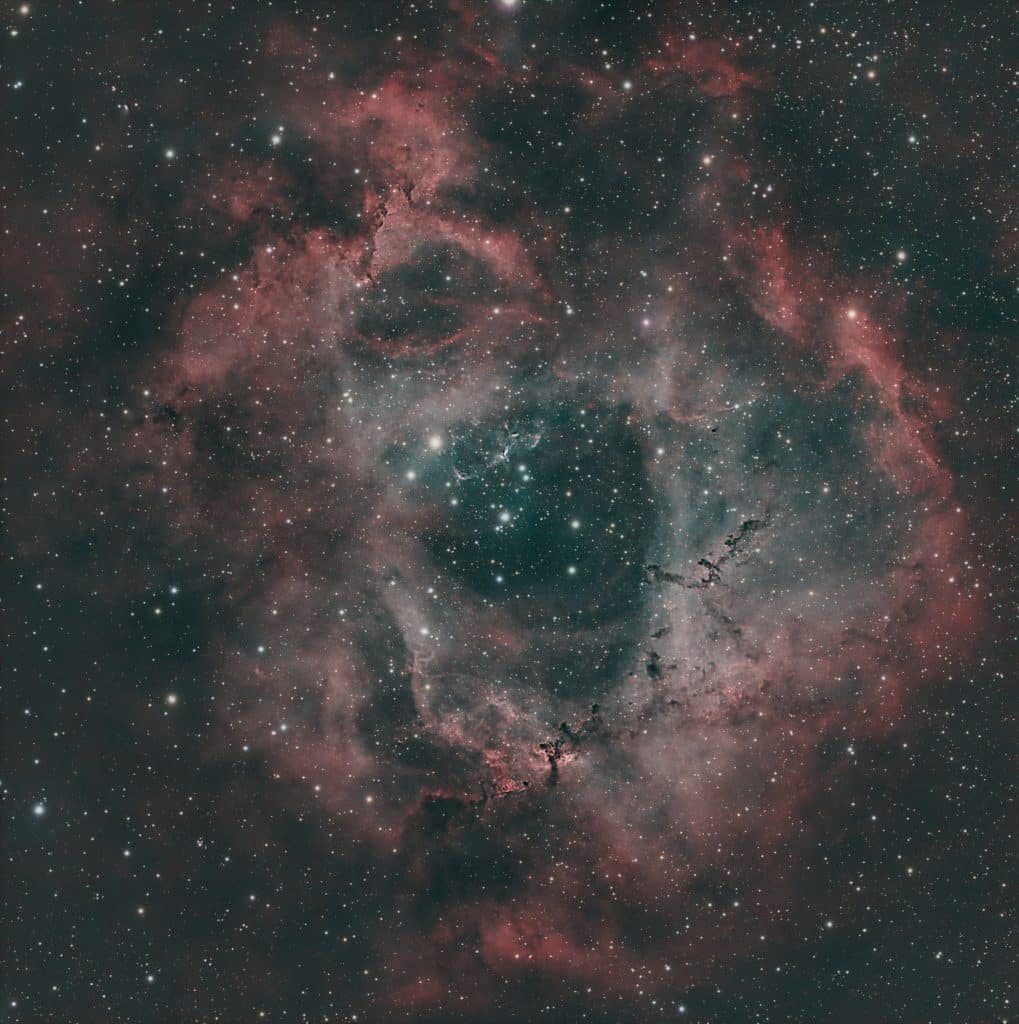Table of Contents
New camera new season
As expected since I received my new camera I have not had any clear skies. But on the 23rd of December, my luck finally changed and I managed to collect about one hour of data from my “Unicorn” the Rosette Nebula, SH2-275, a beautiful nebula in the constellation of Monocerotis. I have attempted to photograph the Rosette Nebula twice before at the beginning of my astrophotography journey.
On April 8th 2024 I posted my first post of the SH2-275 on Instagram. This image was taken with my first setup, the trusty old Tamron 150 – 600 mm and a Nikon Z5 camera. The camera had not been astro-modded in any way.

ASI533 – The square sensor
Ever since attending university, as an astronomer, I have been using CMOS sensors and CCDs to make images of the universe. The first images I recorded used to have a square aspect ratio. This was ideal for most things in professional astrophysics, mainly this avoided problems with curved focal planes and flat sensors, which made it easier to have a flat image without chromatic aberration across the image.
Technical comparison between Nikon Z5 and ZWO ASI533MC Pro
Until now I have been using the Nikon Z5 which is a full-frame camera and it has not been modded for astrophotography. The mirrorless camera suffers greatly from heating and hence read-noise with long exposures. Since astrophotography is all about long exposures This has a direct impact on the image quality and the integration time needed to get reasonable results.
Nikon Z5
Sensor size: 35.9 x 23.9 mm
Image resolution: 6016 x 4016 px
Sensor resolution: 24.2 Mpx
Pixel size: 5.95 μm
ASI533 MC Pro
Sensor size: 11.3 x 11.3 mm
Image resolution: 3008 x 3008 px
Sensor resolution: 9.05 Mpx
Pixel size: 3.76 μm
The new camera has a lower resolution than the old camera then how come I claim that it will prove to take better images than the nikon? First of all it is a dedicated astronomy camera. This means that it is a cooled camera which reduces the read noise to a bare minimum, providing more clean data than the Nikon Z5 will ever be able to do.
Secondly, the smaller pixel size will help in reducing the bulky shape of the stars, so they will appear more nice and round. The higher image resolution of the Nikon Z5 also meant that the wireless transfer from the ASIair mini was rather slow where the files of the ASI533 is super fast in comparison.
SH2-275 image comparison.
What happens if you compare images from the two cameras side by side? Below you will find a comparison between the second image of SH2-275 and the most recent one. The old one can be found in a previous post here.


On the left in the blue tones we have the old image taken with the Nikon Z5 and the Tamron 150 – 600 mm telephoto lens. The integration time for this image is around two hours. When the image is inspected the structures in the nebula is not standing out clearly and we can see that there are several areas of SH2-275 where the image is not sharp.
The right-side panel in the fake HOO colour, shows far more detail, but fewer surroundings of the nebula. The tighter crop of the ASI533 paired with the Askar 71F Flat Field, provide far more detail in the image stack. In this image, the total integration time was just about an hour. About half the integration time of the old image yet the level of detail in the nebula is far better with a proper refractor and astro-camera.
Facts on the Rosette Nebula
Right Ascension: 06 33 45
Declination: +04 59 54
Distance: 5200 light-years
Apparent visual magnitude: 9.0
Apparent visual dimension: 1.3°
Constellation: Monoceros
Nebula radius: 65 light-years
Names: SH2-275, CTB 21, Caldwell 49
Below you can see the final result after an hour’s integration of SH2-275 with the Askar 71F Flat-Field and the ASI533 MC Pro camera without any filters.




